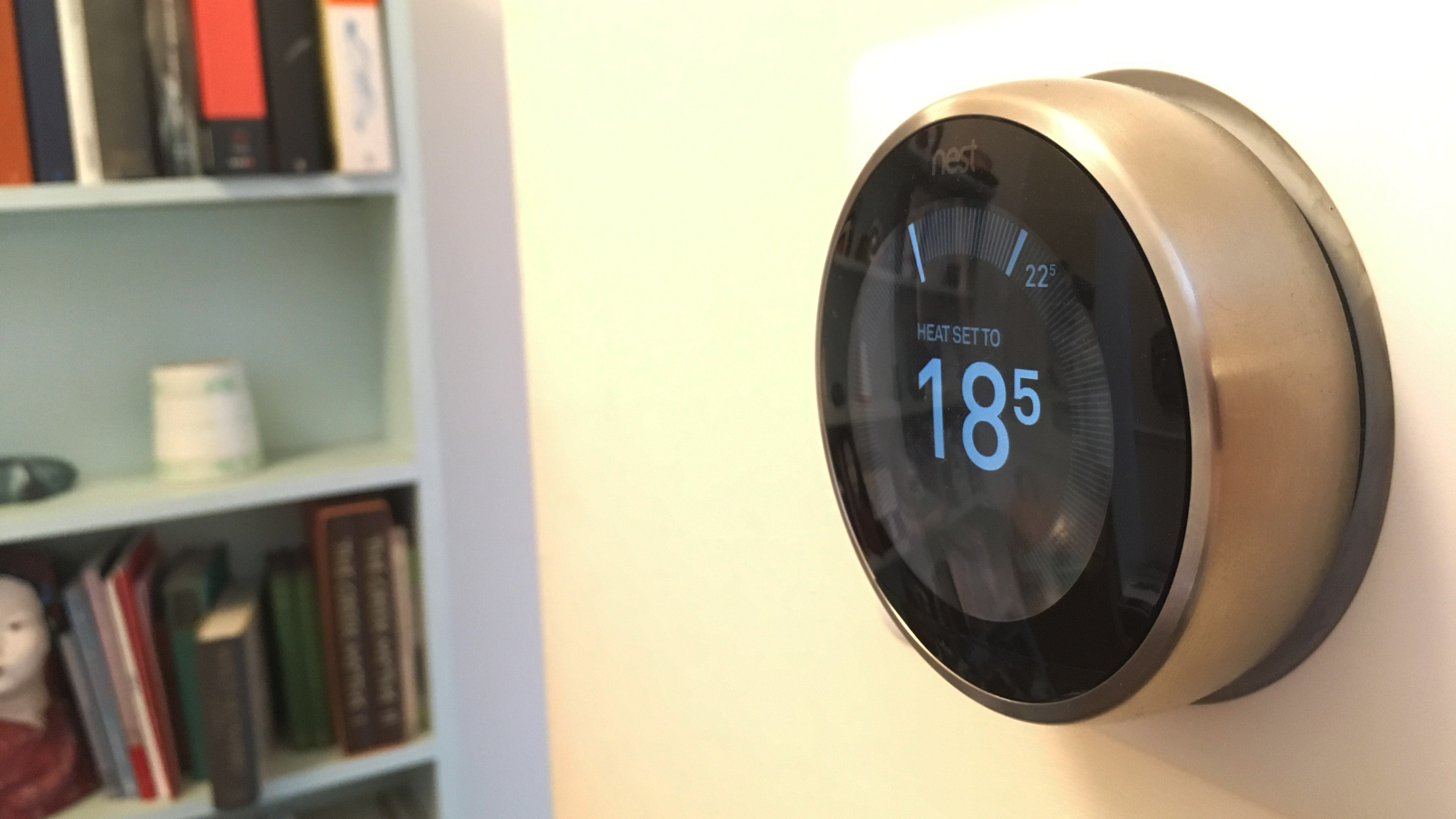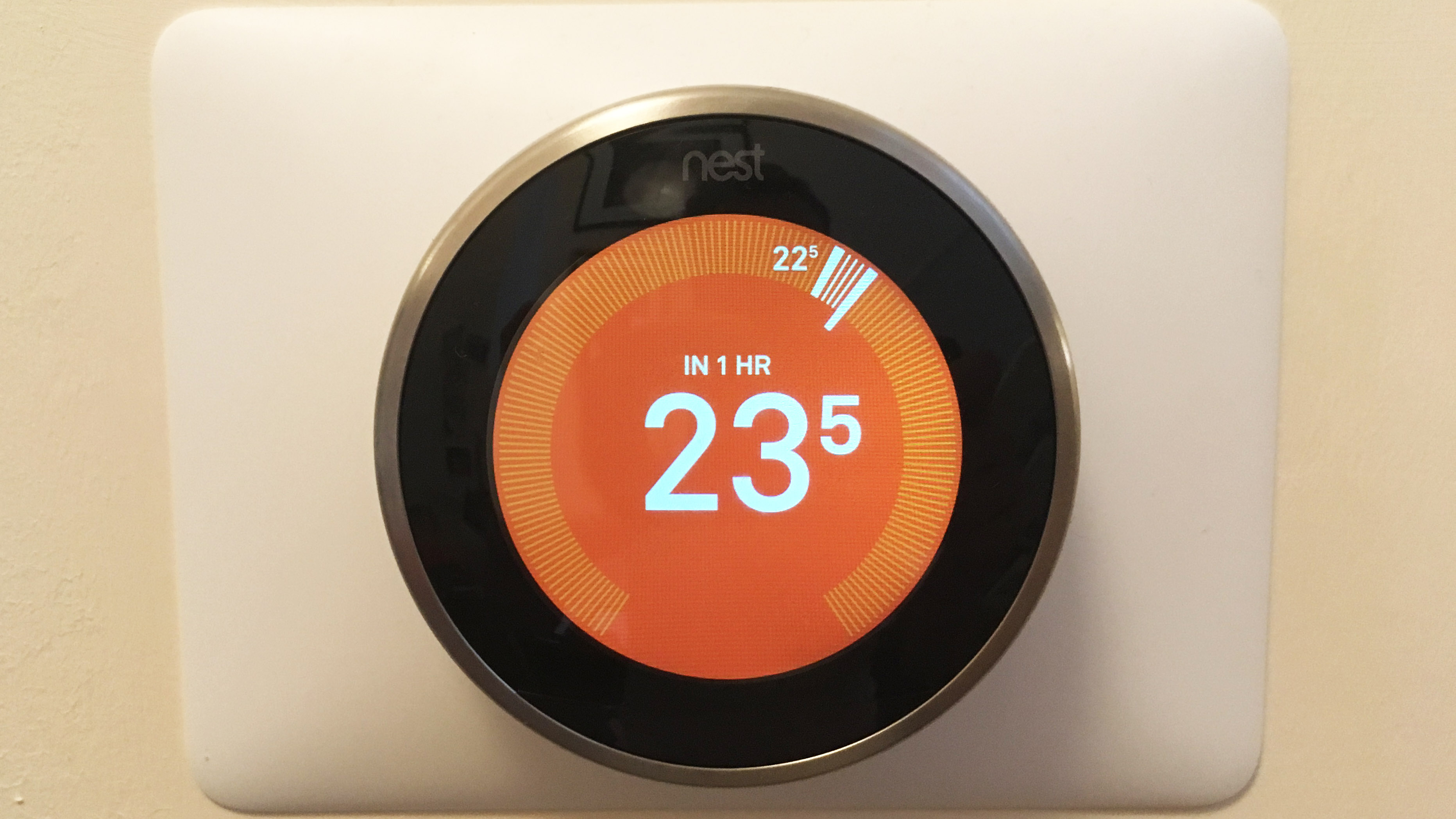TechRadar Verdict
Nest claims that its smart thermostat is an easy way of saving money on your future heating bills. It has an attractive design and is easy to operate, but the immediate cost might put some off. After living with the device for a year, our results showed that the thermostat saved us energy usage, but the difference you'll see will vary based on your house and heating habits.
Pros
- +
Attractive design and finish
- +
Great mobile app
- +
Very simple to operate
- +
Learns and adapts with use
Cons
- -
No zonal heating control
- -
Functionality relies on good placement
- -
Best installed by a professional
Why you can trust TechRadar
Nest made some pretty grand claims about its smart thermostat when it was first announced. The company claimed that, through a more intelligent heating system, its thermostat could reduce your energy consumption by as much as 10% and hence save you money.
We've lived with the thermostat for a year now, and we've got the data to work out whether there's any truth to these claims. Read on to find out, but what we can tell you right now is it's one of the best smart thermostats you can buy. .
Before it got into the business of making security cameras like the Nest Cam IQ and Nest Cam Outdoor, the smart home company was first and foremost about one thing: heating.
- Best smart thermostat: heating your home using tech
The Nest Thermostat was the company's first product, before it got into security cameras like the Nest Cam IQ and Nest Cam Outdoor, and it continues to be a very competitive and smartly designed thermostat, even if some of its functionality lags behind the competition in 2017.
While it’s perfectly possible to control it with your phone, the Nest thermostat is clever enough that you’ll soon stop bothering. Not only does it remember the various temperature settings you put it to throughout the day, using its built in motion sensor and GPS functionality of its app it will alter its program based on your schedule.

In other words, if you decide to head out for the evening rather than stay in, the thermostat is clever enough to not waste energy heating an empty house.
It’s not the perfect system, the lack of zonal controls means that you’ll often end up heating empty rooms, but our year of use saved us just over 13.5% on our heating bill. There are a couple of caveats to this, though, so check out the ‘Performance’ page for more details.
In the meantime, read on to learn how the $249/£279 Nest Learning Thermostat works.
Features
There are two parts to the Nest Learning Thermostat. There's the thermostat itself, which can be fixed on the wall (in lieu of the existing thermostat for example) or displayed on an optional stand, which is sold separately. In the latter mode, you will need to put the Nest near to a power socket and within reach of your router (you will need Wi-Fi).
The other part is the heat link. This is the component that will control the boiler and communicate wirelessly with the thermostat.
We had the Nest Thermostat installed professionally, which the company recommends due to it needing to connect to some pretty high-voltage wires. Overall the installation took around an hour, and it was a fairly painless process for the installer to disconnect our old thermostat and install a Nest in its place.
One household can have multiple zones, each with its own Nest thermostat and heat link, but most homes will probably have just the one thermostat. Nest doesn’t currently offer any connected radiator valves to allow you to fine tune the temperature in various rooms.

The thermostat's design is loosely similar to Apple iPod's click wheel. Not a surprise given that Nest was created by the same guy who designed the iPod more than a decade ago. It is made up of premium material (glass, brushed metal) and has a stylish design that certainly beats your standard thermostat in terms of looks.
The ring itself uses a rotate and press/click paradigm, similar to the iPod, to navigate the circular menu and enter data.
We really like the design of the thermostat. Turning a wheel to select a temperature is intuitive and satisfying, and although this control scheme struggles when you’re doing something more complicated like inputting a Wi-Fi password, day to day operation rarely hits this level of complexity.
The thermostat’s screen is a 24-bit colour LCD screen with a 480 x 480 pixel resolution, which is more than good enough to see everything you need to.
The current temperature is displayed on the outer ring while the target temperature is shown in bold characters in the centre of the display. The sensor window contains temperature, humidity, light and activity sensors.
Jon Porter is the ex-Home Technology Writer for TechRadar. He has also previously written for Practical Photoshop, Trusted Reviews, Inside Higher Ed, Al Bawaba, Gizmodo UK, Genetic Literacy Project, Via Satellite, Real Homes and Plant Services Magazine, and you can now find him writing for The Verge.

